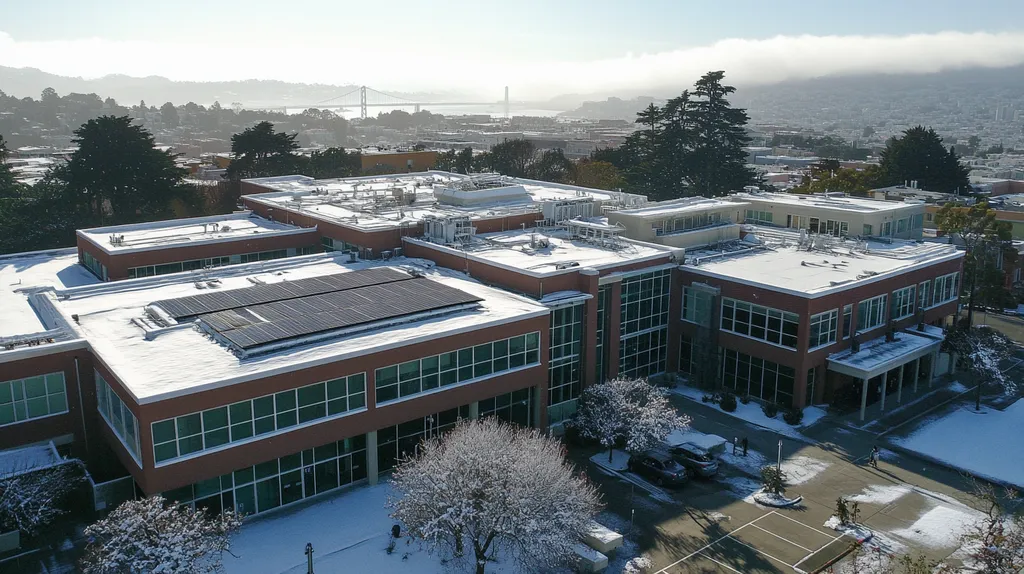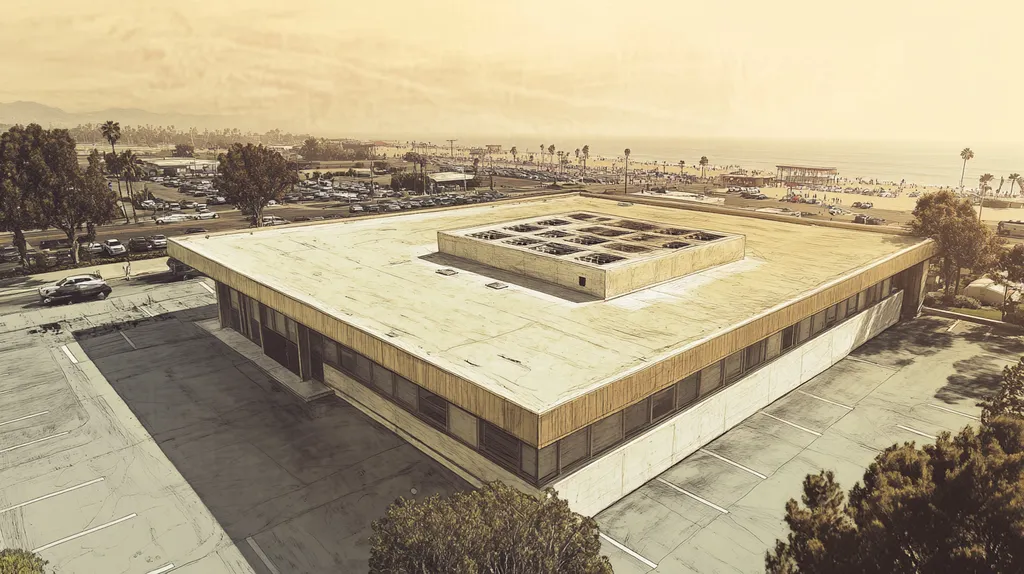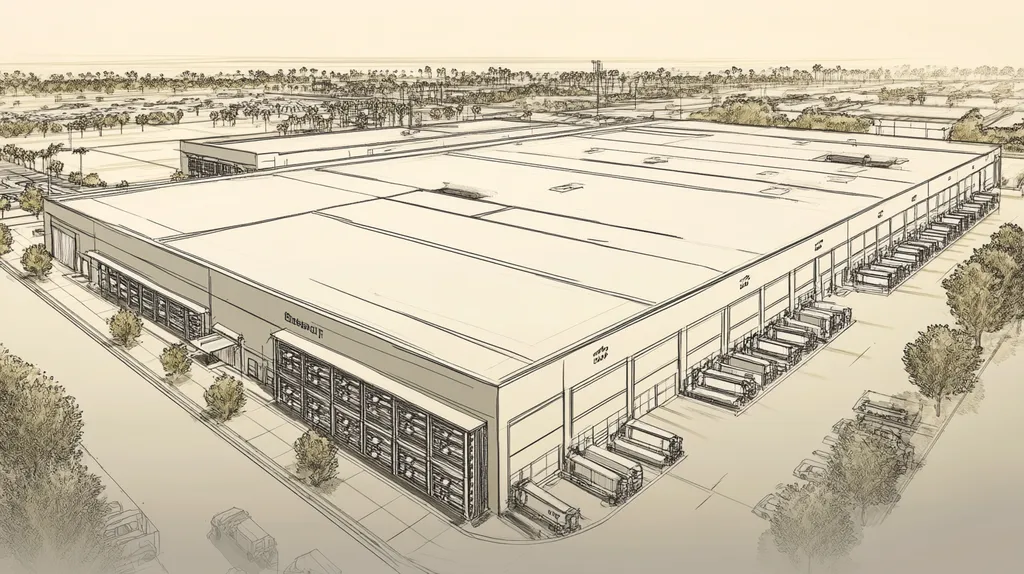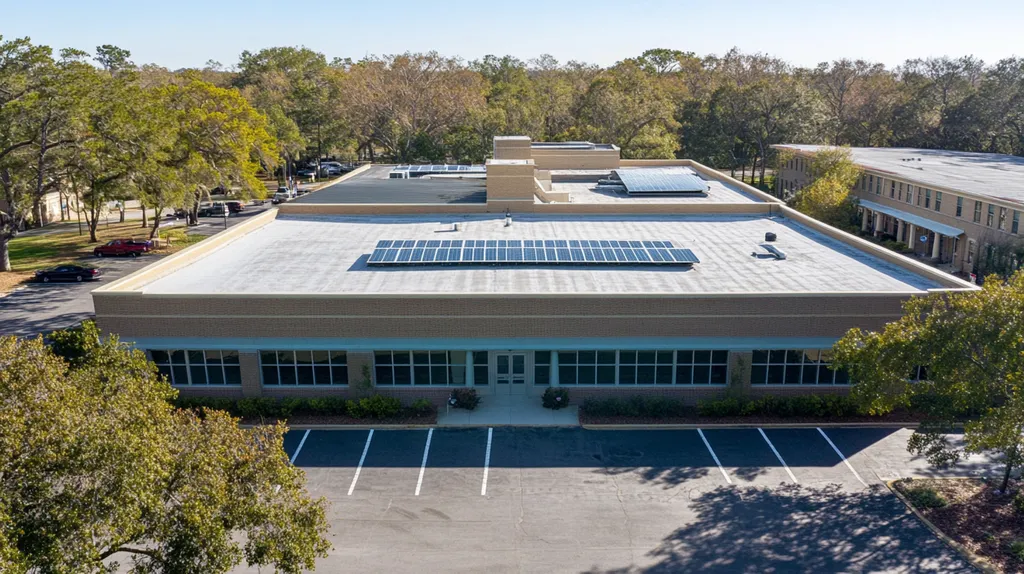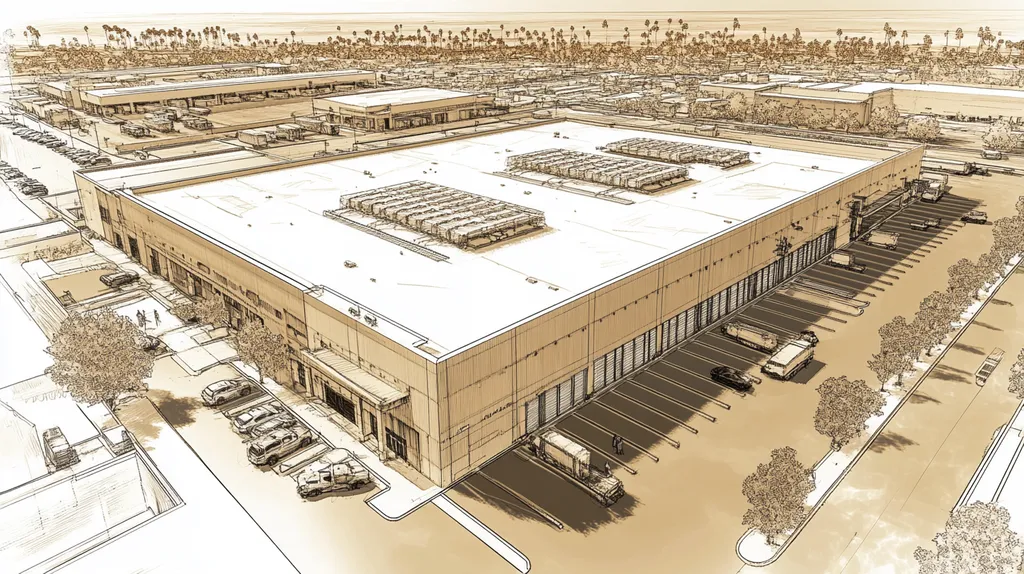When it comes to commercial roofing, nearly 40% of safety incidents stem from aesthetic choices that compromise structural integrity. Property managers face mounting pressure to create visually striking buildings while ensuring occupant safety.
From material selection to installation methods, every design decision carries potential safety implications that impact both short-term operations and long-term liability.
This comprehensive guide examines critical safety considerations that must inform aesthetic choices, providing property professionals with actionable solutions to create beautiful yet secure commercial roofs.
SECTION 1: PERFORMANCE FACTORS
In the world of commercial roofing, making informed decisions is critical. Property owners are tasked with balancing attractive designs and essential performance factors to enhance both safety and longevity. With approximately 60% of roofing failures stemming from overlooked aspects, addressing these issues can safeguard properties against costly repairs and potential hazards. This section delves into the vital performance factors of weather resistance, structural integrity, and energy efficiency.
Ensuring Weather Resistance
Weather resistance forms the backbone of a reliable commercial roofing system. Strong materials designed to withstand rain, snow, and temperature extremes are essential to prevent roof degradation. For instance, single-ply membranes combine durability with aesthetic appeal but require precise installation to avoid leaks.
Conducting regular inspections allows property owners to catch vulnerabilities early, extending the lifespan of the roof. This vigilant approach not only protects the interior but also enhances exterior aesthetics. Opting for materials crafted for weather resistance ensures structural and visual reassurance.
Additionally, installing adequate drainage solutions reduces water pooling—a common cause of leaks. Selecting appropriate slopes and drainage features not only enhances the roof’s appearance but also serves as a safeguard against weather damage.
Moreover, reflective roofing options can keep buildings resilient against harsh climates while adding character to their design. By prioritizing weather resistance, property owners set the stage for an appealing and functional roof.
Key Action Items
Maintaining Structural Integrity
Structural integrity is vital, as the roofing system supports the entire building’s framework. Factors such as age, heavy snowfall, or debris accumulation can undermine a roof’s stability, making it crucial to select materials that provide strength while enhancing visual appeal.
For example, lightweight materials reduce the load on the structure, while innovative engineered solutions can bolster load-bearing capabilities. Regular assessments are essential in regions experiencing severe weather to ensure roofs can endure expected loads.
Seamless transitions among roof components further reinforce structural integrity. An integrated system, with insulation, roofing, and flashing working in harmony, not only creates a polished appearance but also ensures maximized performance.
Investing in quality craftsmanship during installation enhances structural integrity. Hiring experienced contractors adhering to industry standards ensures that roofs remain secure and functional throughout their lifespan.
Key Action Items
Optimizing Energy Efficiency
Energy efficiency has taken center stage in today’s commercial roofing landscape. With energy costs continuously rising, choosing energy-efficient roofing solutions can significantly lower utility expenses and reduce environmental footprints. Reflective roofing materials are especially effective at deflecting heat, resulting in cooler indoor environments.
High-quality insulation plays a crucial role in preventing heat loss, maintaining a comfortable indoor climate. This not only enhances tenant comfort but also appeals to those seeking sustainable building features.
Incorporating green roofs adds beauty while improving energy efficiency. They contribute to effective stormwater management and offer additional insulation, leading to lower energy costs and enhanced aesthetics.
Lastly, installing energy-efficient skylights maximizes natural light while reducing reliance on artificial illumination. Collectively, these strategies enhance a property’s visual charm and promote significant energy savings, benefiting property owners and the community alike.
Key Action Items
SECTION 2: FINANCIAL CONSIDERATIONS
Property owners face an urgent challenge: balancing aesthetics with safety when selecting a commercial roof. An eye-catching roof can draw in tenants and clients, yet neglecting safety factors can lead to costly liabilities. Approximately 50% of contractors report project delays due to budget constraints, underscoring the necessity of understanding the financial implications of roofing choices.
Initial Investment vs. Long-Term Savings
A visually stunning roof often comes with significant upfront costs. However, the potential long-term savings from selecting durable, safe materials could greatly surpass these initial investments. Energy-efficient materials might even qualify for rebates, helping to offset those costs.
For instance, a commercial building owner considering a green roof solution might face higher installation costs initially, but would benefit from substantial energy savings and increased longevity over time. This emphasizes an important takeaway: what looks best on the surface may not always be the wisest financial investment in the long run.
Conducting a lifecycle cost analysis assists property managers in forecasting long-term roofing expenses. This analysis can reveal the optimum balance between aesthetics and durability, guiding informed decisions that lead to financial stability.
Key Action Items
Cost of Maintenance and Repairs
The ongoing costs of maintenance and repairs can significantly affect the overall financial health of a roofing project. Roofs with elaborate designs often require specialized care, which can drive expenses higher. Additionally, overlooking safety aspects may lead to more frequent repairs, straining budgets even further.
A property owner choosing an attractive roof made from inferior materials may quickly find that initial beauty diminishes as maintenance needs grow. Increased repair frequency can interrupt operations, resulting in lost revenue during downtime.
Implementing a proactive maintenance plan can help mitigate unexpected costs. By scheduling regular inspections and routine repairs, property owners can extend the roof’s life and stabilize their financial commitments, highlighting the importance of addressing maintenance from the start.
Key Action Items
Impact on Property Value
The roofing choice impacts both safety and the market value of a property. A well-maintained and safe roof enhances curb appeal, making it more attractive to potential buyers or tenants, which can lead to smoother real estate transactions and improved profitability.
Research shows that properties with properly installed and maintained roofs sell faster and at higher prices than those focused solely on aesthetics. Investors increasingly recognize the broader effects of roofing on property values.
On the flip side, properties that ignore roofing safety may experience depreciation due to higher insurance costs or lower resale values. An unsightly roof could signal neglect, discouraging prospective buyers or tenants.
It is crucial for property professionals to view roofing choices not only as aesthetic improvements but as essential investments with significant implications for property values, always factoring in safety considerations.
Key Action Items
SECTION 3: COMPLIANCE REQUIREMENTS
In commercial roofing projects, navigating compliance requirements is crucial. These regulations ensure safety and protect property owners from hefty fines and dangerous situations. Approximately 10% of construction delays arise from compliance-related issues, underscoring the necessity for property owners and facility managers to be well-versed in local building codes, safety regulations, and accessibility standards, as these factors directly influence both aesthetics and safety.
Adhering to Local Building Codes
Local building codes set the ground rules for the design and construction of commercial roofs, ensuring they are safe and structurally sound. These codes specify the types of materials, drainage solutions, and insulation values required for compliance. For example, areas susceptible to hurricanes may mandate roofs designed to withstand high winds, showcasing the need for region-specific considerations.
Non-compliance with these codes can lead to costly rework, increased project delays, and potentially even project shutdowns. Furthermore, roofs that fail to meet code standards may complicate insurance claims, leaving property owners financially exposed in the event of an incident. Staying informed about these regulatory changes is vital for the success and safety of any roofing project.
Building codes can frequently change to address new safety issues or environmental considerations. Property managers should regularly consult these codes and engage with local authorities during the planning stages to avoid setbacks. Employing knowledgeable professionals is key to ensuring adherence to the latest regulations.
Key Action Items
Meeting Safety Regulations
Safety regulations are essential for protecting both workers and building occupants during roofing projects. These guidelines cover fall protection measures, material quality, and installation practices. For instance, the Occupational Safety and Health Administration (OSHA) requires specific safety features such as guardrails and harness systems when work is performed on rooftops.
Neglecting to implement these safety measures can lead to serious accidents, resulting in injuries, lawsuits, and financial penalties. Therefore, property managers must prioritize following safety protocols throughout the roof installation or repair process. Regular training and safety audits can also mitigate risks and ensure compliance.
Working with certified roofing contractors who uphold industry safety standards can further enhance protections. Many of these companies offer certifications that demonstrate their commitment to safety, instilling trust among property managers and clients alike. Ultimately, adhering to safety regulations contributes to a safer environment for all.
Key Action Items
Ensuring Accessibility Standards
Accessibility standards are vital for ensuring that buildings are usable by everyone, including those with disabilities. The Americans with Disabilities Act (ADA) outlines specific requirements that apply to various building features, including roofing aspects such as access points and roof gardens. Non-compliance with these regulations can lead to significant legal repercussions and limit the usability of a building.
For instance, if a roofing design includes an outdoor terrace that isn’t accessible to individuals with mobility challenges, it may be deemed non-compliant with accessibility standards. This oversight can lead to expensive renovations and other financial repercussions that could have been avoided. On the other hand, focusing on accessibility can enhance a property’s marketability, making it appealing to a wider audience.
Consulting ADA guidelines during the design and planning phases is a proactive approach to preventing these issues. Property managers should collaborate with architects or consultants specializing in accessibility to ensure their roofing designs meet both aesthetic and functional goals. Prioritizing accessibility demonstrates a commitment to inclusivity and compliance.
Key Action Items
SECTION 4: RISK MANAGEMENT
Effective risk management is vital in the commercial roofing sector, especially when balancing aesthetic appeal with safety concerns. A single oversight can result in significant financial loss and legal issues. With the Occupational Safety and Health Administration (OSHA) reporting over 200,000 annual worker injuries related to roofing, identifying potential hazards, establishing robust safety protocols, and mitigating liability risks are essential for property managers and owners who aim to safeguard their investments.
Identifying Potential Hazards
Recognizing potential hazards is the first step property professionals must take in managing roofing risks. Common dangers include falls, exposure to harmful substances, and the impact of extreme weather. It’s important to note that many roofing accidents are linked to insufficient fall protection.
By understanding these hazards, property owners can take proactive measures. Regular roof inspections and hiring trained professionals facilitate the early detection of potential issues. Moreover, using appropriate materials and construction techniques is crucial for safeguarding worker safety.
An effective safety plan includes educating team members about the risks associated with roofing projects. Hosting training sessions can provide vital information about safety protocols and emergency responses, ultimately leading to a notable decrease in on-site accidents.
Key Action Items
Implementing Safety Protocols
Establishing effective safety protocols is crucial for minimizing risks in roofing projects. These procedures should encompass guidelines regarding fall protection, equipment usage, and handling materials. For instance, integrating guardrails and personal protective equipment (PPE) significantly enhances worker safety during installations.
Regular safety meetings are essential for reinforcing these protocols, allowing team members to voice concerns and share best practices. When safety becomes a shared value, the workforce is more likely to adhere to guidelines consistently.
Additionally, providing emergency response training and first aid certifications for staff ensures quick action during unexpected incidents. This preparedness can minimize the severity of injuries and reduce liability risks.
Key Action Items
Mitigating Liability Risks
Mitigating liability risks is a vital aspect of risk management for property professionals. Property owners can face hefty financial repercussions if accidents occur during roofing work. Liability insurance is essential to safeguard against claims stemming from safety negligence.
Choosing experienced roofing contractors is another effective strategy for reducing liability. Professionals with strong safety records are more likely to adhere to regulations and utilize high-quality materials, thereby lowering risks. A thorough hiring process can ensure that contractors prioritize safety in their work practices.
Additionally, drafting written safety contracts is important as they clearly outline the responsibilities of both the property owner and the contractor concerning safety measures. Such clarity helps minimize legal disputes and establishes clear expectations.
Key Action Items
SECTION 5: OPERATIONAL PROCEDURES
Establishing effective operational procedures is critical for ensuring both the aesthetics and safety of commercial roofs. Regular inspections play a vital role; without them, roofs can suffer structural damage that leads to expensive repairs and aesthetic degradation. Studies indicate that roofs lacking consistent maintenance may lose up to 50% of their lifespan. Implementing routine inspections, adequate training for maintenance crews, and comprehensive emergency response plans helps maintain safety while preserving the visual integrity of the property.
Regular Inspection and Maintenance
Regular inspections and maintenance are essential for the longevity and visual appeal of commercial roofs. These assessments should take place at least twice a year, ideally before and after harsh weather seasons, to identify potential problems like leaks or structural weaknesses before they escalate.
A systematic maintenance approach can dramatically increase the lifespan of roofing materials. For example, routinely cleaning debris from drainage systems prevents water accumulation, a leading cause of leaks. Keeping thorough records of inspections and maintenance activities not only demonstrates due diligence but also enhances property value.
When qualified professionals perform inspections, they can provide insights that non-experts might overlook. They can recommend improvements that enhance both functionality and aesthetics, ensuring a cohesive look while upholding safety standards.
Key Action Items
Training for Roof Access and Safety
Establishing a strong training program for roof access is vital to ensure the safety of maintenance personnel. Training sessions should cover essential safety protocols, the use of personal protective equipment (PPE), and emergency procedures, helping to minimize the risk of accidents during rooftop work.
Effective training empowers staff to recognize hazards that can compromise both safety and aesthetics. For example, limiting foot traffic on sensitive materials can prevent damage and extend their lifespan. Regular refresher courses and workshops keep safety procedures at the forefront of employees’ minds.
A well-structured roof access plan can streamline movement and enhance safety by outlining designated pathways and access points. This approach reduces the risk of accidental injuries and damage to roofing materials while ensuring that safety priorities remain clear.
Key Action Items
Emergency Response Planning
Emergency response planning is crucial for commercial roof operations, especially when it comes to unforeseen events like severe weather or unexpected structural failures. Property managers must establish protocols that facilitate quick action to minimize damage and ensure safety during emergencies.
The emergency plan should include key contacts, immediate response steps, and procedures for contacting emergency services. Conducting regular drills familiarizes all team members with the protocols, helping to minimize confusion during critical situations.
Incorporating technology, such as roof monitoring systems, can provide real-time insights into the roof’s condition, allowing for more effective decision-making during emergencies. This proactive measure can help mitigate potential aesthetic damage, ensuring a faster return to normal operations.
Key Action Items
SECTION 5: OPERATIONAL PROCEDURES
Establishing effective operational procedures is essential for both the aesthetics and safety of commercial roofs. Regular inspections are crucial, as neglect can result in structural damage and costly repairs. Studies indicate that roofs lacking routine maintenance may lose up to 50% of their lifespan. This highlights the importance of a proactive approach that includes consistent inspections, staff training, and emergency response planning. These practices not only enhance safety but also preserve the visual appeal of the property.
Regular Inspection and Maintenance
Conducting regular inspections and maintenance is vital for the longevity and aesthetics of commercial roofs. Ideally, inspections should occur at least twice a year, especially before and after harsh weather conditions. This allows early detection of issues like leaks or structural weaknesses before they escalate into major repairs.
A structured maintenance approach can significantly extend the lifespan of roofing materials. For example, routinely removing debris from drainage systems helps prevent water pooling, a leading cause of leaks. Keeping thorough records of inspections not only demonstrates due diligence but also enhances property value.
Involving qualified professionals in the inspection process brings insights that others might overlook. They can recommend improvements to both functionality and aesthetics, ensuring a cohesive appearance while maintaining safety standards.
Key Action Items
Training for Roof Access and Safety
Implementing a robust training program for roof access is crucial for maintaining the safety of maintenance personnel. Training should cover essential safety protocols, the proper use of personal protective equipment (PPE), and emergency procedures. These sessions aim to minimize the risk of accidents, especially when work must be performed at heights.
In addition, effective training enables staff to identify hazards that can compromise both safety and aesthetics. For instance, minimizing foot traffic on sensitive materials can prevent damage and extend their lifespan. Regular refresher courses help keep safety measures top-of-mind.
Establishing a designated access plan is another way to enhance safety. This plan should specify safe pathways and access points, reducing the risk of accidents and protecting roofing materials from damage.
Key Action Items
Emergency Response Planning
Emergency response planning is a critical aspect of operational procedures for commercial roofs. Unexpected events, such as severe storms or structural failures, require clear protocols to ensure a swift response and mitigate damage. Property managers should create a comprehensive emergency plan tailored to the specific roofing materials and features of the building.
This plan should include designated emergency contacts, immediate response steps, and clear procedures for contacting emergency services. Regular drills familiarize all team members with these protocols, reducing confusion during actual emergencies.
Incorporating technology, such as roof monitoring systems, provides real-time data on the roof’s condition. This allows for more effective decision-making in emergencies, enabling quicker actions that can minimize aesthetic damage.
Key Action Items
Moving Forward
With over 40% of commercial roof failures traced to aesthetic choices that compromise safety, property professionals can no longer afford to prioritize appearance over security.
The financial implications are staggering – unsafe roofing choices cost businesses an estimated $2.5 billion annually in repairs, liability claims, and lost productivity.
By following the guidelines and checklists outlined in this comprehensive resource, property managers can create roofing systems that harmoniously blend visual appeal with essential safety features.
The future of commercial roofing lies in smart design choices that protect both assets and occupants while enhancing property aesthetics.
Taking action today to implement these proven strategies will help ensure safer, more attractive, and more valuable commercial properties for decades to come.
FREQUENTLY ASKED QUESTIONS
Q. What performance factors should I consider for a commercial roof?
A. It’s essential to consider weather resistance, structural integrity, and energy efficiency. Choosing materials that withstand extreme weather can significantly enhance both safety and durability. Regular inspections can help identify vulnerabilities early, ensuring a lasting roof system that also looks visually appealing.
Q. How do financial considerations affect commercial roofing choices?
A. Initial investments in quality materials may be higher but can lead to long-term savings. Energy-efficient options might qualify for rebates, reducing upfront costs. Understanding the lifecycle costs helps property managers balance aesthetics and safety for better financial outcomes.
Q. Why are compliance requirements critical for commercial roofs?
A. Compliance with local building codes and safety regulations safeguards against legal issues and ensures structural integrity. Following these guidelines helps avoid costly penalties and enhances overall safety, ultimately protecting both property value and occupants.
Q. How can I effectively manage risks with commercial roofing?
A. Identifying hazards like falls or exposure to extreme weather is critical. Establishing comprehensive safety protocols and conducting regular inspections can help manage risks effectively. Collaborating with experienced contractors who prioritize safety can further reduce liability risks.
Q. What operational procedures should I implement for my commercial roof?
A. Regular inspections, proper training for maintenance teams, and robust emergency response plans are crucial. Consistent maintenance can prevent costly repairs while ensuring the roof’s aesthetics and safety standards are maintained throughout its lifespan.
Q. What are the benefits of green roofs for commercial properties?
A. Green roofs enhance energy efficiency by providing insulation and reducing heat absorption. They also improve stormwater management and add aesthetic appeal, making properties more attractive to tenants. This eco-friendly option can contribute to a more sustainable community and lower energy costs.
Q. How do I choose the right roofing contractor for a commercial roof?
A. Look for experienced contractors with a strong safety record and positive reviews from past clients. Ensure they are knowledgeable about local building codes and compliant with safety regulations. A thorough interview process can help you select a reliable partner for your roofing project.

